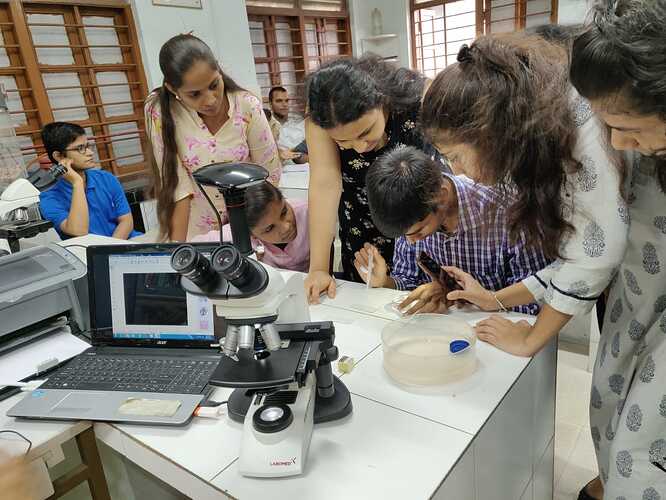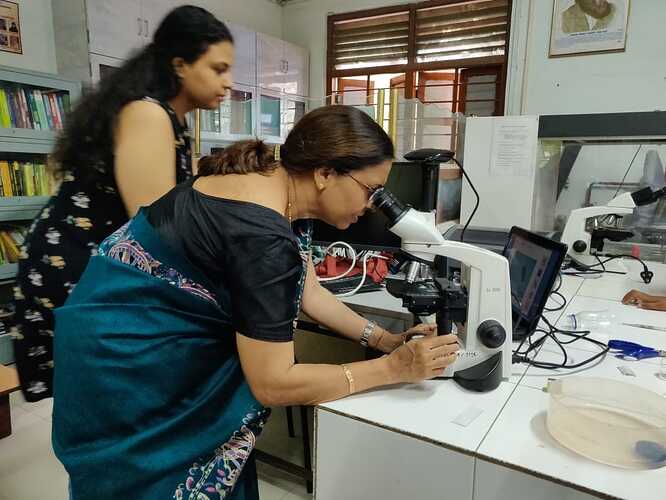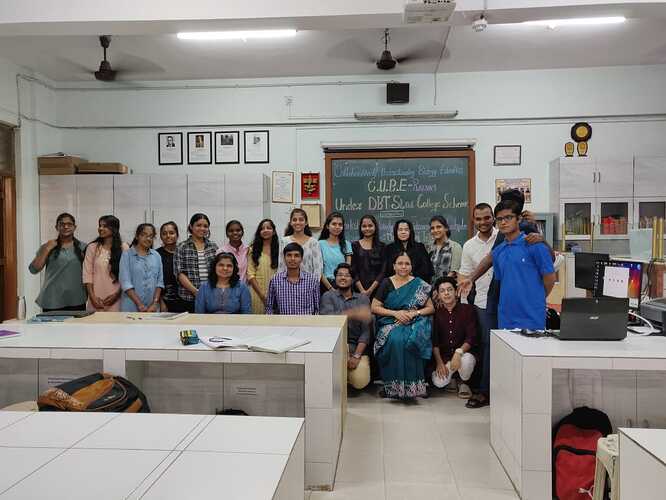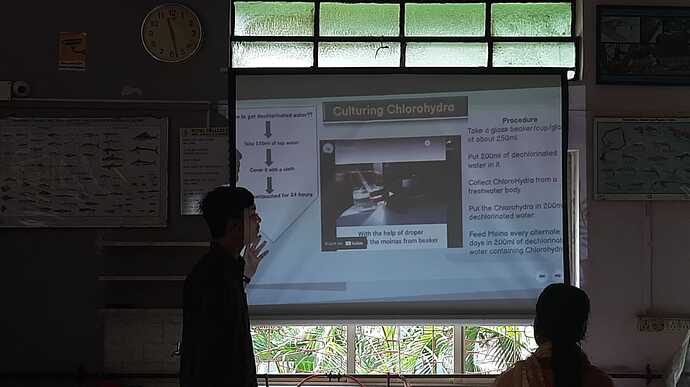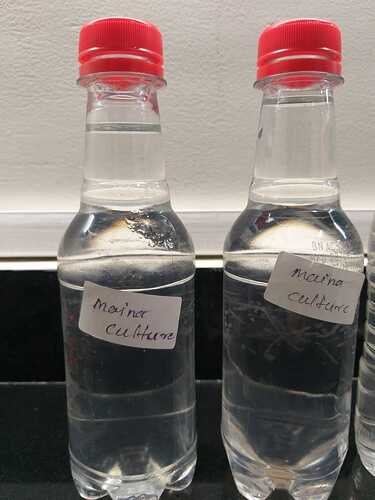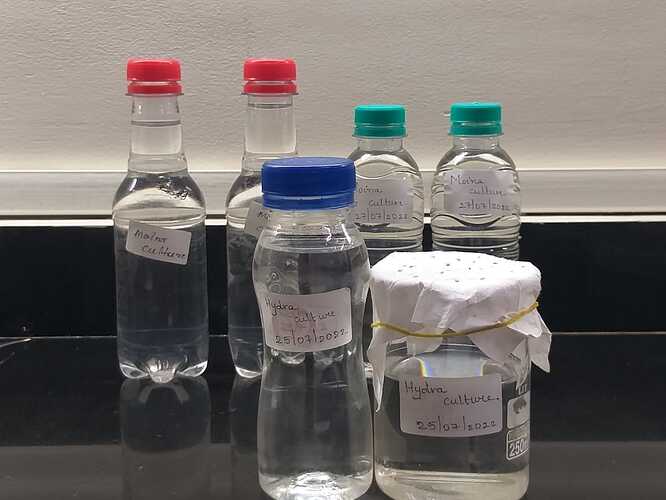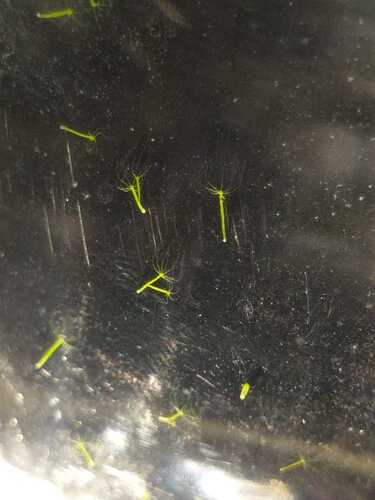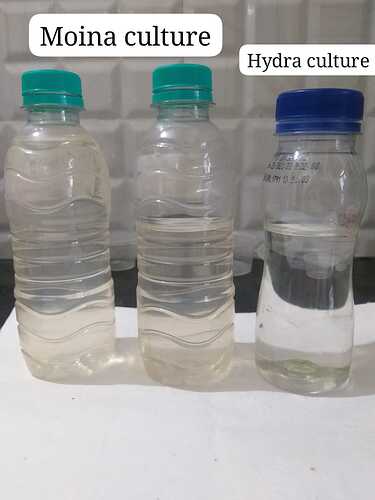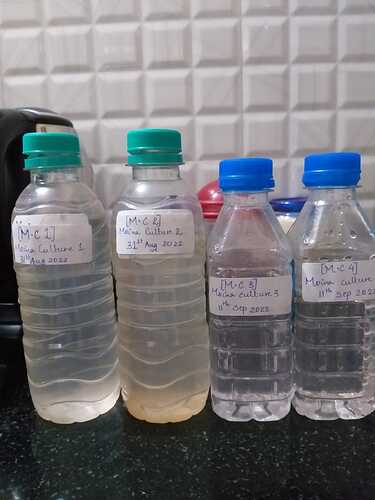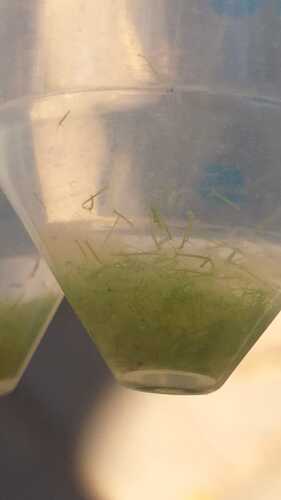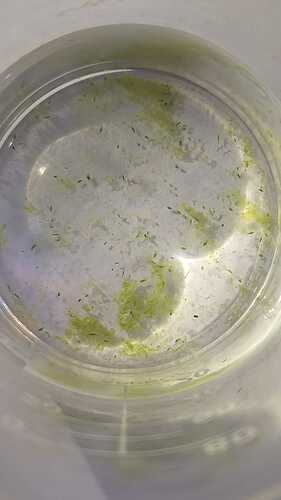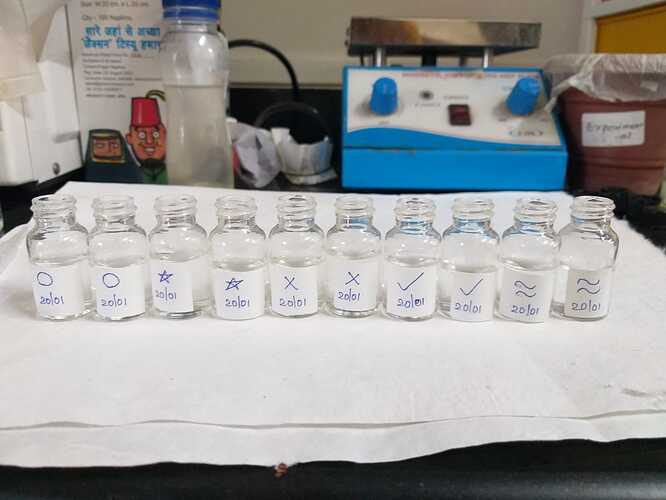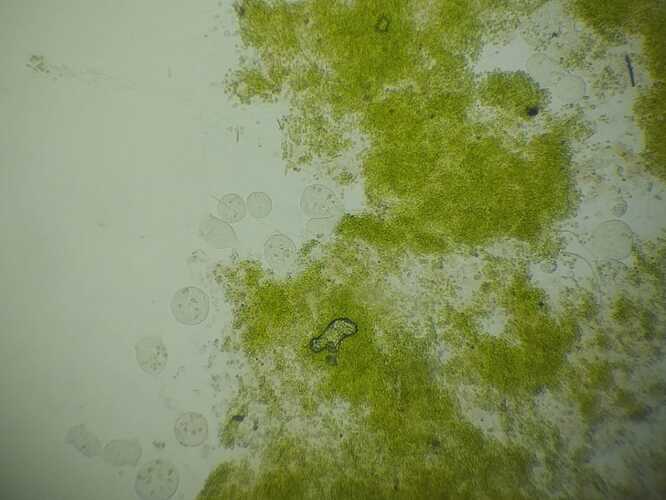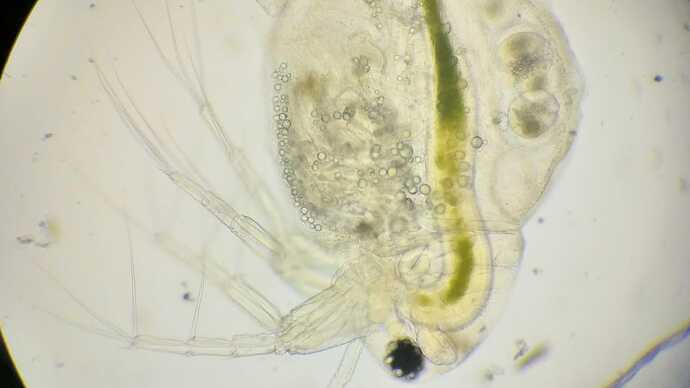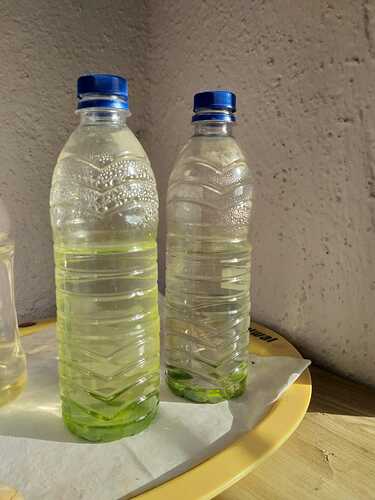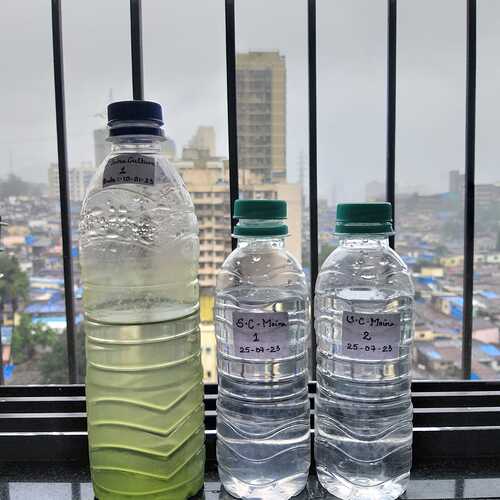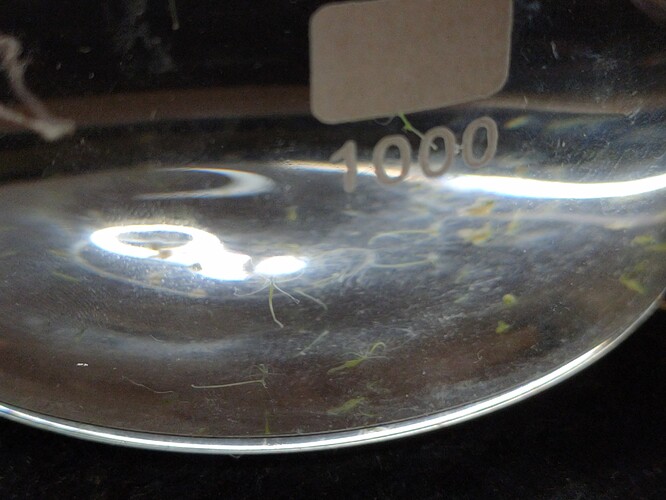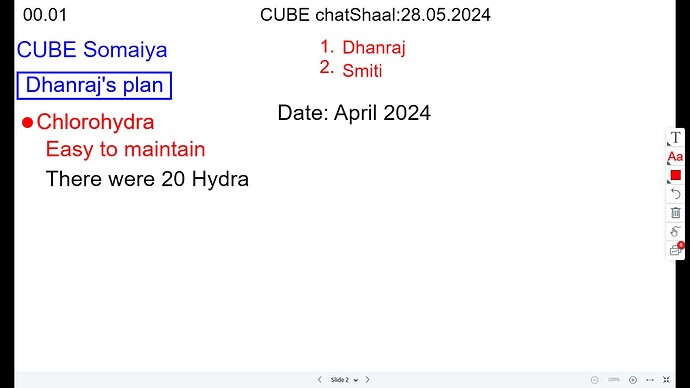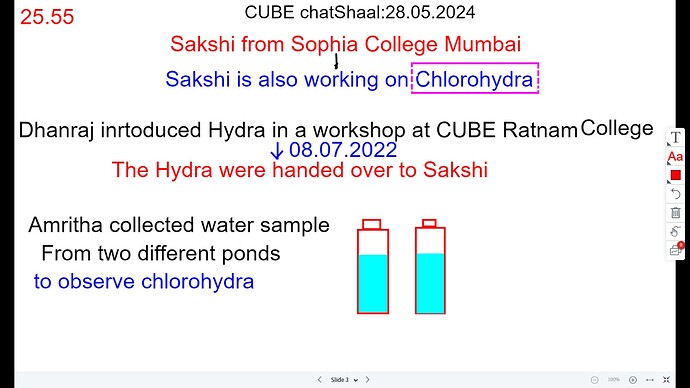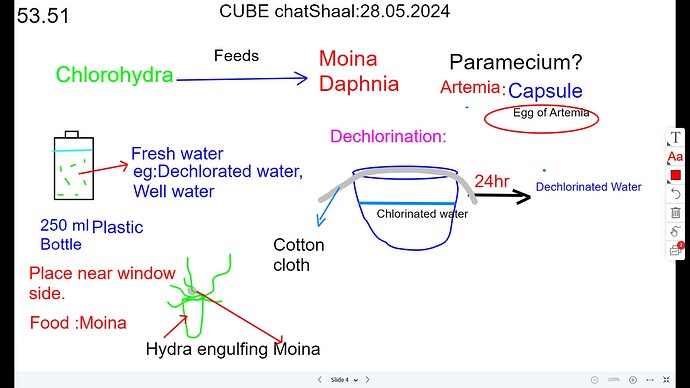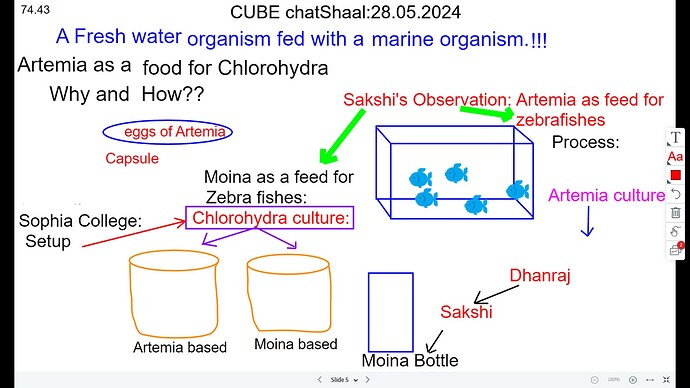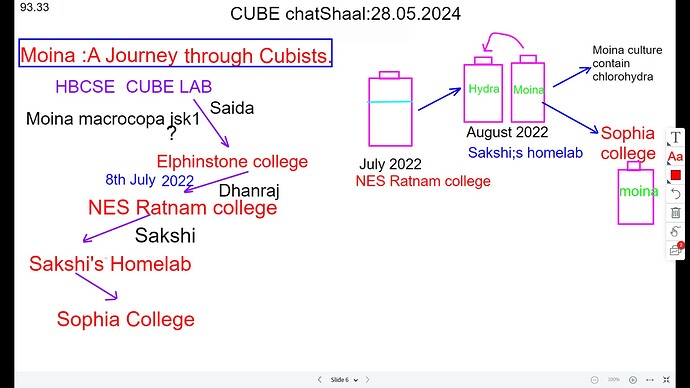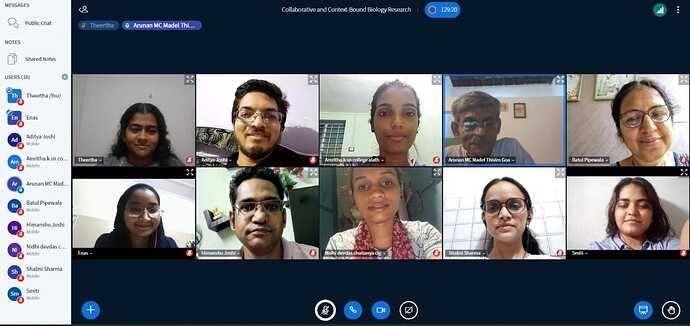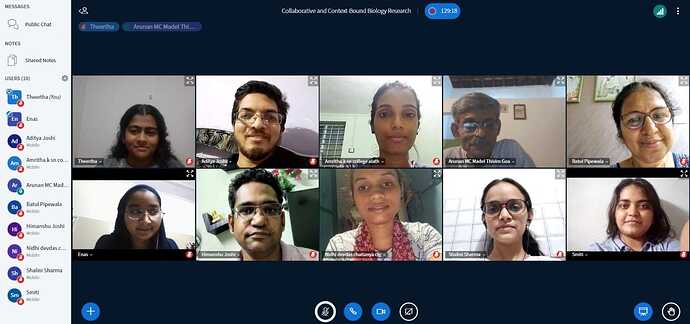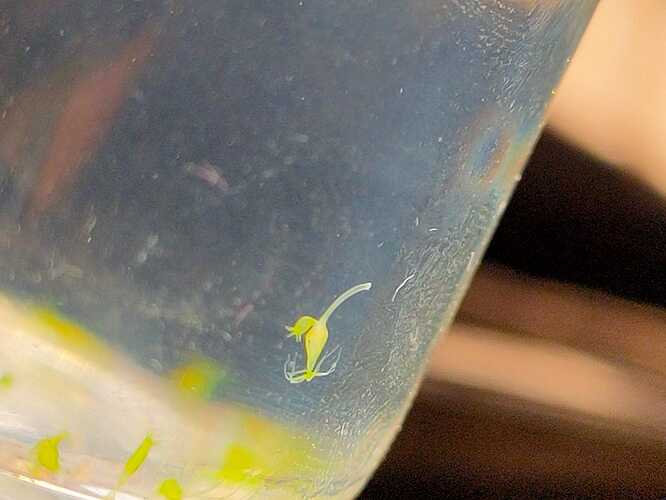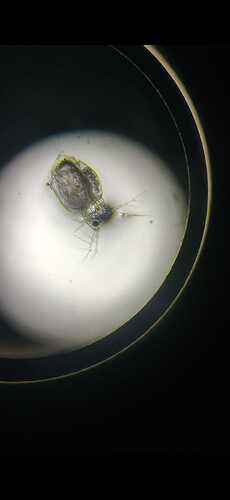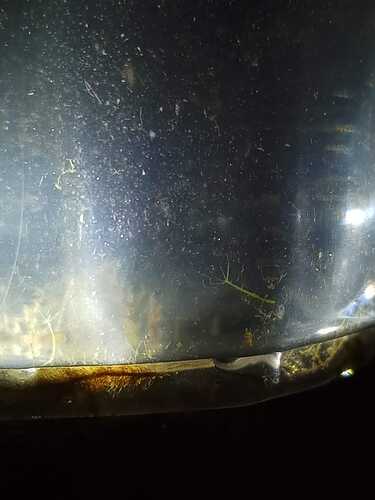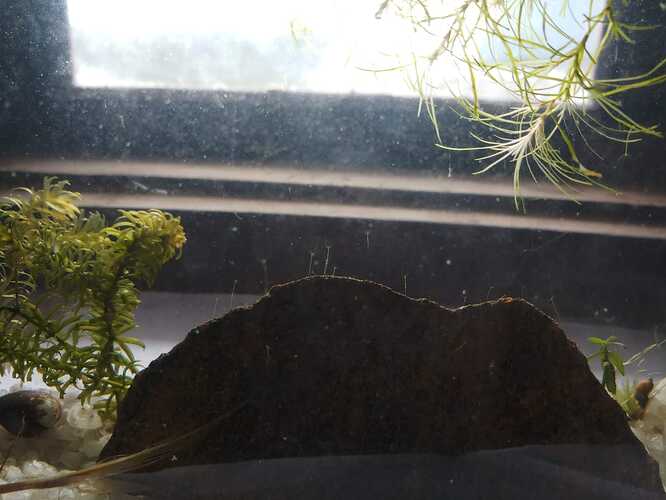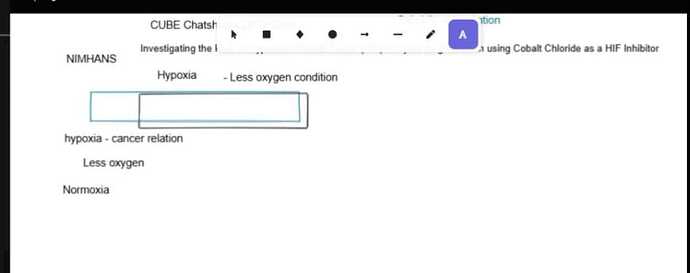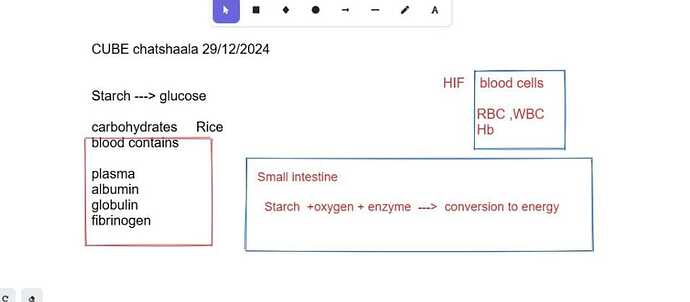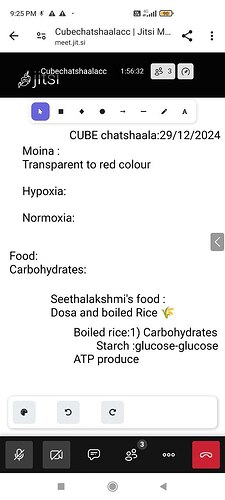Dhanraj and Sakshi @dhanraj7 @sakshiconsultant2002 have been culturing Chlorohydra for almost 3 years. Shakshi said that in her college, Sophia Mumbai, Artemia is a feed for Chlorohydra.
Sakshi introduced Moina to feed Chlorohydra, which she learned from CUBE. Parallely, Sakshi and Dhanraj had a hypothesis that marine organisms like Artemia can cause problems in Chlorohydra, a freshwater organism. It is good to replace Artemia with Moina, a freshwater organism.
Collaboration:
These are the photos of the workshop on Study and maintenance of Chlorohydra which was conducted at Ratnam College and @dhanraj7 was invited as a resource person.
Date - 8th of July 2022.
On the same day collaborator pritesh from Elphinstone college was also invited as a resource person for workshop on Chlorohydra by @Prof.Farhaan Makba CUBE at royal college Mira road.
The photos are below.
Following are the photos from @sakshiconsultant2002
Moina culture maintenance done be me in the month of july 2022.
Long shot picture of hydra and moina culture maintained in ratnam college with labelling.
Video of moina culture showing moinas at the top of the bottle.
Date:27th july 2022
Name:sakshi
Location:ratnam college
Picture of chlorohydra culture maintained in the bottle!
Date of picture: 1st August 2022
Location: ratnam college
Name: sakshi
Moina culture and hydra culture shifted to homelab due to vacations!
2 bottles of moina culture and 1 bottle of hydra culture.
Date: 31st august 2022
Location:bhandup.
Name:sakshi.
Hydras maintained in transparent glasses.
Date:31st august 2022.
Video of moina culture maintained in the bottle.
Date: 9th September 2022
Location: bhandup
Name: sakshi
Subcultures of moina made on 13th September 2022.
Location: bhandup.
Name: sakshi
Video of hydra culture maintained in glass.
We can see green particles present at the surface of the glass and the moinas were not fed by hydra.
20 September 2022
Sakshi.
Number of moina’s increased also there is transfer of green particle from the chlorohydra glass to the bottle we can see some green algal growth at the bottom of the bottle.
Date: 9th October 2022
Location: bhandup.
Name:sakshi.
Made subculture of moina on 13th October 2022.
Bhandup.
Sakshi.
Approximately 400 moinas or more than that seen in this bottle culture along with green algae.
Lost hydra culture:(
Date: 27th November 2022
Location: bhandup
Name: sakshi.
Subcultures of moina with normal and algal growth.
Date:10th January 2023
Location:bhandup
Name:sakshi
Again got chlorohydra from dhanraj on 12th January 2023.
Location: somaiya college
Name:sakshi.
Transferred the chlorohydra in glass beaker the dots and dashes aare chlorohydra there was also presence of green algae at the bottom.
13th January 2023.
Bhandup.
Sakshi.
Done an experiment of light and dark conditions with hydra. Experiment went till 15 days.
Date: 20th January 2023
Location: ratnam college
Name:sakshi.
Lost the hydras again!
We were left with chlorella algae at the bottom of the beaker and moina’s feeding on that algae:(
Date: 1st February 2023.
Bhandup.
Sakshi.
Green algae seen in the intestine of moina.
2nd February 2023
Sakshi.
Moina culture with green algae maintained at home lab
9th june 2023
Bhandup.
Sakshi.
Accumulation of algae at the bottom of the bottle.
Date 21st july 2023.
Bhandup.
Sakshi.
Again, made subcultures of moina.
Date:25th july 2023.
Bhandup.
Sakshi.
Video of moinas in the subcultures.
1st august 2023
Bhandup.
Sakshi.
Video of moinas present in algal medium.
1st august 2023
Bhandup.
Sakshi.
Hydra culture in Sophia college.
Photo: Sakshi.
Here is the video of hydras fed with artemia.
This is the video of hydras feeding on moina.
